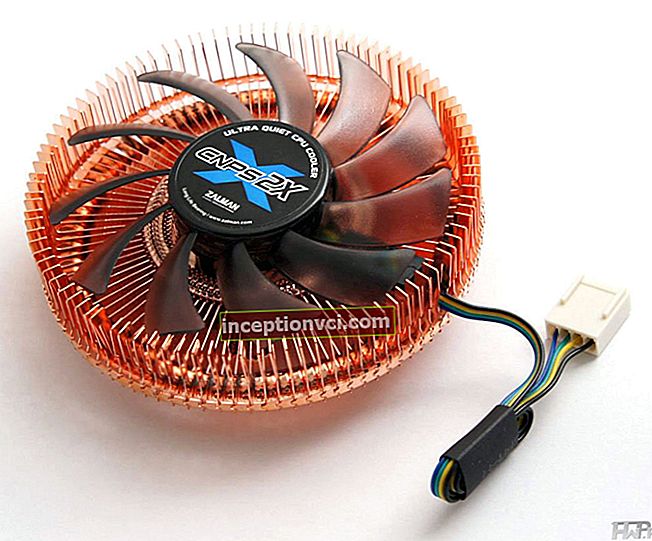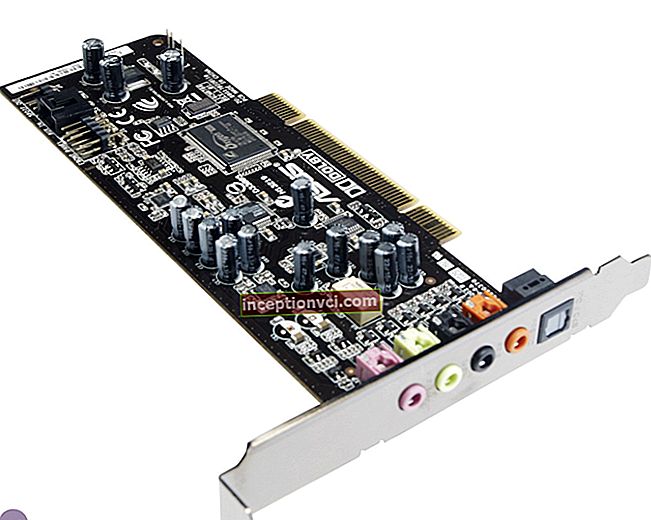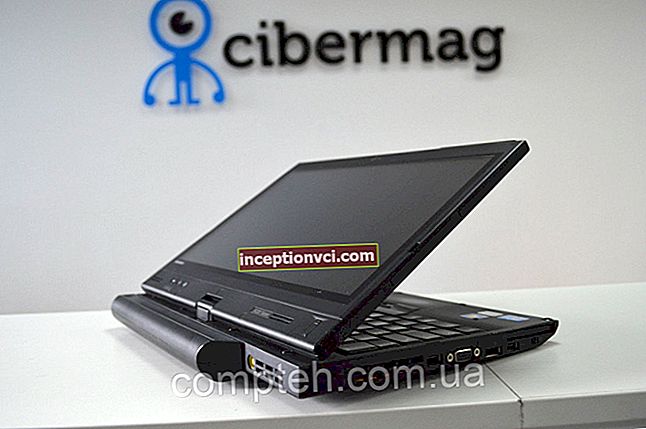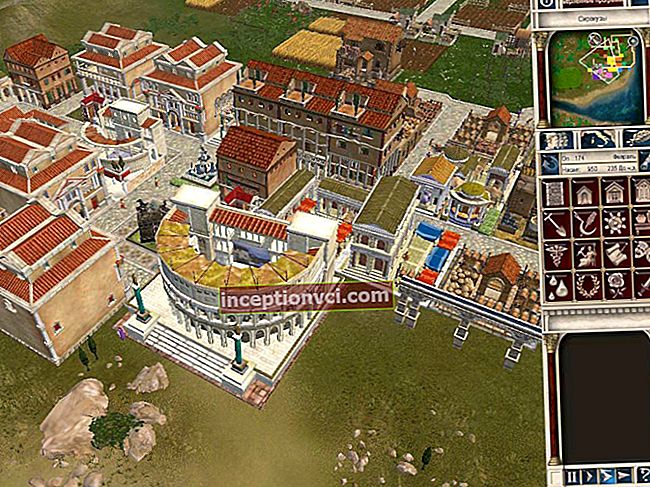Everyone has a computer mouse. With the advent of new rodents at home, old, still workable, but morally obsolete, as a rule, are thrown away or gather dust idle in the pantry. However, not everyone knows that many of the most useful devices in the household can be made of these cheap devices, practically without changing the electronic filling. Meanwhile, it is not at all difficult to do this. And now we will tell you how.
Structural Displacement Controller
To control the smallest displacements of one object relative to another, you can use an ordinary computer mouse, which has served all the terms, but still workable. One of these rarities was used in a village house - to control the subsidence of the foundation and walls relative to each other. This method can be used by readers who own houses that are not entirely new, or where the soil erodes the foundation, which causes the load-bearing structures and walls to shift. The use of a computer mouse eliminates the need to build a relatively complex circuit. The manipulator is ideal for this task. Let's analyze it and find out why. Having opened the case of the mouse, we get access to the printed circuit board and the mechanism for determining the coordinates (photo 1).

The ball, spring-loaded on both sides, comes into contact with two plastic drives, at the end of which there are gears. The gears rotate between the IR (infrared) transmitter and receiver. There are two such devices - for positioning the cursor horizontally and vertically. When the mouse is operated diagonally, both position coordinators are mechanically involved. Pulses from both IR receivers (three-pin IR transistor housings) are fed to a microcircuit (on the back of the printed circuit board) filled with a compound. Its type is designated - SS-1HBA-1. From the output of this microcircuit, through smoothing pulsations, the control signal is fed to the connector with the designation J1 and then to the PC via wires. The pinout of the J1 connector is as follows: 1 and 4 pins (black and yellow conductors of the connecting cable from the PC) - common wire, 5 - "+ 5 V" (red). The green and white wires are the conductors of a high-frequency pulse train with an amplitude of 4.5 V. The last two conductors transmit information about the change in the position of the mouse to the PC. However, these signals cannot be used without a special decoding device. Therefore, there is an easier way to get control signals from the mouse (when moving it). So, the IR transistor Q1 (opposite to it is the IR LED IR1) is responsible for the lateral movement of the mouse (left, right), and Q2 and, accordingly, IR2 - for the longitudinal (straight, forward, backward). Experimentally, it was possible to establish that in the absence of an obstacle between the IR transmitter and the receiver at the terminals Q1 and Q2 (except for the middle terminal - there is always + 5 V) there is a high voltage level, and it changes to low as soon as the IR receiver stops receiving a signal transmitter. That is, when the mouse moves, the ball acts on the cogwheel, which, in turn, blocks the signal path with its teeth. This is how it works. The same control signal (changing from high to low) can be "taken" from the jumper pins marked on the PCB JPD2 and JPD3 (highlighted in photo 1). Knowing where on the computer mouse board to connect an executive device, for example, an object displacement signaling device, it remains only to take care of the electronic adapter, which converts the change in the logic level into an audio signal. Photo 2 shows a mouse fixed between the crowns of a village house and a stable attached to it.When the house settles and at least a millimeter change in the distance between the logs, the "mouse" immediately gives a signal, and an additional signaling device "raises the alarm."

Similarly, you can control the settlement of the foundation, the tilt of doors, door frames and any structures where tilting, moving or displacement of parts is undesirable or dangerous. To create a sound signaling device, you can use the scheme shown in photo 3.

A sound capsule with a built-in sound generator was used as HA1. It must be connected strictly in accordance with the polarity. Transistor VT1 p-n-p-conduction opens when the voltage at point A is close to zero, that is, at the moment the mouse is displaced. Thus, at this very moment, the squeaker we have assembled begins to squeal.
Attention, important!
Do not try to apply more than 6 V voltage to the electronic filling of the mouse - it will be damaged.
Almost no one uses mechanical mice today (everyone switched to optical ones), so their "second life" seems to be very interesting and useful - as part of the considered signaling device about the displacement of the supporting structures of a village house. This development can be applied in other cases - when a high-precision object displacement sensor is required. A computer mouse fully meets the requirements of such a task, if only because any movement of it, even half a millimeter, will generate a change in the level from high to low.
Having disassembled the case of a mechanical mouse, I recommend blowing compressed air around the attachment points of the plastic gears and the positioning ball, and also drop a drop of household oil onto the gear attachment to reduce friction from the rotation of their axes. Optical mice are devoid of moving mechanical parts, they are more durable, and the principle of operation based on signal reflection from the surface makes it possible to create an original contactless backlit light switch on the basis of an optical mouse. Let's consider the process of creating such a device using the example of a computer optical mouse Defender Optical 1330 (resolution 400 dpi).
Proximity light switch
You won't surprise anyone with original light switches today, but the one presented below is a really impressive and, most importantly, inexpensive device that can entertain guests. So why was the mouse taken as the basis? Firstly, a miniature manipulator fits well into a wall niche (a hollowed-out place for a regular key switch). Secondly, no direct contact with the switch is required - just hold your finger (or other object) at a distance of 1.5 cm from the "red eye" of the backlight. Third, the device initially has a trigger effect. Once he ran his finger - the light came on, the second time - turned off. A response indicator is also provided - when you slide your finger at the "backlight", it lights up 3 times brighter.
An optical computer mouse will have to add a simple transistor-based current amplifier with an executive relay in the collector circuit so that the signals from the "MOUSE" control a lighting lamp with a power of up to 200 W (limited by relay parameters) - more on that below. Since almost all optical mice are built according to the same scheme, consider one of them - Defender Optical 1330, shown in photo 4.

The main coordinate positioning device is a microassembly with the designation U2 A2051B0323. combined with a photodetector (in one case). From pin 6 of this microassembly, pulses with a frequency of about 1 kHz are sent to a constant red LED on the LED, so even when the optical mouse is motionless on the table, a red, barely flickering "backlight" is visible. The LED is a transmitter, and the receiver itself is the microassembly with an electronic unit built into its housing. When the light signals reflected from any surface reach the photodetector, the voltage level at pin 6 of U2 drops to zero and the LED lights up at full strength.This is exactly the reaction we see in the mouse on the computer table when we try to move it. The LED has a full light time of 1.3 seconds (unless the mouse is exposed to a longer duration). One of the main parts of an optical mouse (oddly enough) is not electronics, but a plastic lens, bent at a special angle (see Fig. 5), without which the mouse "goes blind". It is necessary to install the mouse in the wall niche under the standard switch in the assembled case, which reliably fixes the optical lens from the side of the base (substrate) of the mouse. When a hand-reflected signal arrives at the photodetector, the level of the logic signal is reversed at terminals 15 and 16 of the U1 HT82M398A microassembly (and, respectively, at terminals 4 and 5 of the U2 microassembly); moreover, these are not inverse conclusions, but independent from each other. The change in the signal on them occurs depending on the vertical or horizontal movement of the mouse (moving an obstacle in front of it). Therefore, the control signal for the executive device can be taken from any of these outputs and connected to the executive device, to point A (Fig. 6). The opening of the transistor and the switching on of the relay occurs at a high logic level at point A. The VD1 diode protects the relay winding from reverse current surges. Resistor R1 limits the current in the base of the transistor. The relay can control not only a lighting lamp, but also any load with a current up to 3 A. The power supply is stabilized with a voltage of 5 V ± 20%. The transistor can be replaced with KT603, KT940, KT972 with any letter index. The K1 executive relay can be replaced with RMK-11105, TRU-5VDC-SB-SL or similar for a 4-5 V actuation voltage.


The 4-core cable is partially unsoldered from the board at the junction with the standard connector and 2 wires (green and white) are re-soldered to pins 15 and 16 of the U1 microassembly from the side of the elements (not printed wiring), since otherwise the wires will interfere with the installation of the board in the mouse case ... Initial pinout of the connector on the mouse board: pin 1 - common wire, pin 2 - +5 V power supply, 3 and 4 - output pulses. Also, as in the variant discussed above (with a mechanical mouse), this sequence of pulses has a high level with minor deviations downward (according to the figure on the oscilloscope screen). Such pulses cannot be used without additional decoding or a converter device.
If the circuit and the printed circuit board of your mouse do not correspond to the one presented for the example of Defender Optical 1330, it is enough to take any oscilloscope or logic probe (indicating at least two main states - high and low) and experimentally find points with a control signal on the board. Any optical PC mouse will work, so it doesn't matter which connector is at the end.









